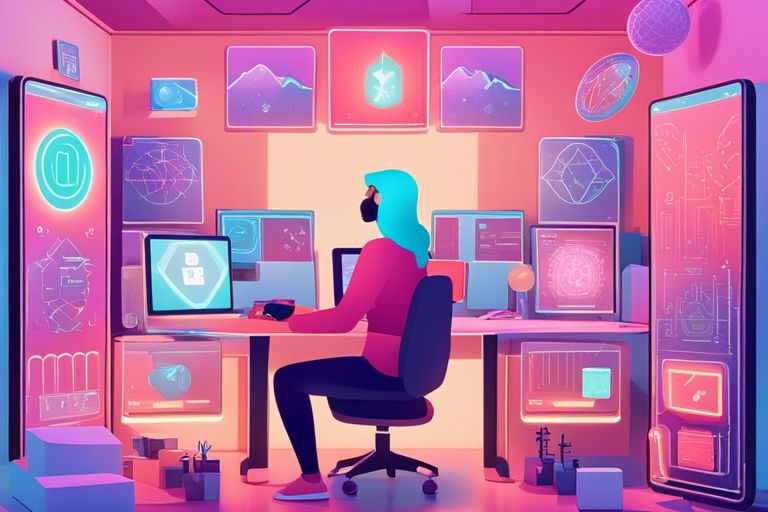The Essential How-To Guide For Artists Wanting To Mint NFTs
NFTs have revolutionized the art world, offering artists unique opportunities to showcase and sell their digital creations. This comprehensive guide will walk you through the imperative steps to successfully mint your own NFTs, from choosing the right platform to creating and uploading your artwork securely. Dive into the world of blockchain technology and discover the potential for earning passive income and gaining a global audience for your art. Don’t miss out on this innovative and lucrative chance to establish yourself in the ever-evolving digital art market.
Understanding NFTs
What are NFTs and How Do They Work?
Your journey into NFTs begins with understanding what they are – non-fungible tokens. These digital assets represent ownership or proof of authenticity of a unique item, whether it’s digital art, music, videos, or even tweets. NFTs are stored on a blockchain, providing a secure and transparent way to verify ownership and track the provenance of the asset.
The Benefits of Minting NFTs as an Artist
On top of the potential financial rewards, minting NFTs as an artist offers a range of benefits. It allows artists to reach a global audience without the need for traditional gatekeepers like galleries or dealers. Additionally, NFTs provide artists with greater control over their work, enabling them to set royalty fees for future sales and ensuring they receive recognition and compensation for their creations.
Understanding the benefits of minting NFTs as an artist can be empowering. Not only do NFTs allow for direct engagement with fans and collectors, but they also open up new revenue streams and opportunities for collaboration. However, it’s crucial for artists to navigate the space carefully, considering potential environmental concerns related to the energy consumption of blockchain technology, as well as the need to protect their intellectual property rights.
Preparing Your Art for NFTs
Tips for Creating NFT-Ready Digital Art
You can optimize your art for NFTs by following these tips:
- Use high-resolution images to showcase your artwork in detail.
- Add metadata such as title, description, and artist information to your digital art files.
- Consider creating limited editions to increase the value of your NFTs.
Perceiving your artwork through the eyes of potential buyers can help you create NFTs that stand out in the marketplace.
Factors to Consider When Choosing a File Format
The file format you choose can impact the quality and compatibility of your NFTs. Consider these factors:
- Choose a widely supported file format like PNG, JPEG, or GIF for better accessibility.
- Ensure your file is the highest quality possible to maintain the integrity of your artwork.
This decision can influence how your NFT is displayed and perceived by collectors.
A proper file format can make or break the success of your NFT. Select a format that preserves the quality and authenticity of your artwork while ensuring compatibility with various platforms and marketplaces. Choosing the wrong file format may result in loss of image quality or hinder the marketability of your NFTs. Take the time to research and understand the best practices for file formats in the NFT space. Optimizing this aspect of your digital art can lead to a more successful NFT launch.
Choosing the Right NFT Platform
How to Research and Compare Popular NFT Marketplaces
Now, let’s research into how to research and compare popular NFT marketplaces. Here is a breakdown of key factors to consider:
| Platform | Key Features |
| OpenSea | Large user base, low fees |
| Rarible | Creator-centric, customizable royalties |
| Foundation | Curation, invitation-only |
Tips for Selecting the Best Platform for Your Art
Right, when selecting the best platform for your art, consider factors such as:
- Community: Look for platforms with an active and supportive community.
- Fees: Compare the fees charged by different platforms to maximize your earnings.
- Features: Choose a platform that offers the features you need for showcasing and selling your art.
With so many options available, it’s crucial to do your research and choose the platform that aligns best with your goals as an artist. This will help ensure you reach the right audience and achieve success in the NFT space.

Minting and Selling Your NFTs
A Step-by-Step Guide to Minting Your First NFT
Step 1: Choose a blockchain platform where you want to mint your NFT, such as Ethereum or Binance Smart Chain.
Step 2: Create a digital wallet to store your cryptocurrency and NFTs securely.
Step 3: Upload your digital artwork or content to the chosen platform.
Step 4: Fill in the details for your NFT, including title, description, and any royalties you wish to receive.
Step 5: Mint your NFT and wait for the confirmation on the blockchain.
Strategies for Pricing and Promoting Your NFTs
Selling
| Pricing Strategies | Promotion Strategies |
| Consider the perceived value of your artwork, rarity, and demand when setting prices. | Utilize social media, NFT marketplaces, artist communities, and collaborations to promote your NFTs. |
| Decide between fixed pricing, auctions, or Dutch auctions to sell your NFTs. | Engage with your audience, share your creative process, and offer exclusive perks to buyers. |
It
NFTs are a unique way for artists to monetize their digital creations and connect with a global audience. It is important to carefully price your NFTs based on their perceived value and market demand. Using social media and other promotional strategies can help you reach a wider audience and attract potential buyers. Remember to stay engaged with your community and continue creating compelling content to enhance the value of your NFTs.
Final Words
Conclusively, ‘The Essential How-To Guide For Artists Wanting To Mint NFTs’ serves as an invaluable resource for creatives looking to navigate the complex world of NFTs. From understanding the basics to setting up wallets and platforms, this guide equips artists with the knowledge and tools necessary to thrive in this emerging digital landscape. By following these steps and incorporating their unique artistic vision, artists can successfully mint NFTs and reach a wider audience in the growing digital art market.
FAQ
Q: What is NFT?
A: NFT stands for non-fungible token, a digital asset that represents ownership or proof of authenticity of a unique item or piece of content using blockchain technology.
Q: What is minting an NFT?
A: Minting an NFT is the process of creating a new digital asset and embedding it with unique data to represent ownership or authenticity, which is then recorded on a blockchain.
Q: How can artists benefit from minting NFTs?
A: Artists can benefit from minting NFTs by reaching a global audience, receiving instant payments, retaining rights and royalties, and creating scarcity for their digital creations.
Q: What are some tips for artists wanting to mint NFTs?
A: Some tips for artists wanting to mint NFTs include understanding the market, creating high-quality and unique content, choosing the right platform, promoting their work, and engaging with their audience.
Q: How do I choose the right blockchain for minting NFTs?
A: When choosing a blockchain for minting NFTs, consider factors such as cost, energy consumption, security, and potential audience reach. Popular blockchains for NFTs include Ethereum, Binance Smart Chain, and Flow.
Q: What are the costs involved in minting NFTs?
A: The costs involved in minting NFTs may include gas fees for blockchain transactions, platform fees for minting and selling, storage costs for digital assets, and potential marketing expenses to promote the NFTs.
Q: How can I protect my intellectual property when minting NFTs?
A: To protect your intellectual property when minting NFTs, consider adding metadata or licenses to your digital assets, using copyright notices, registering your work, and consulting legal professionals if needed.
![]()












